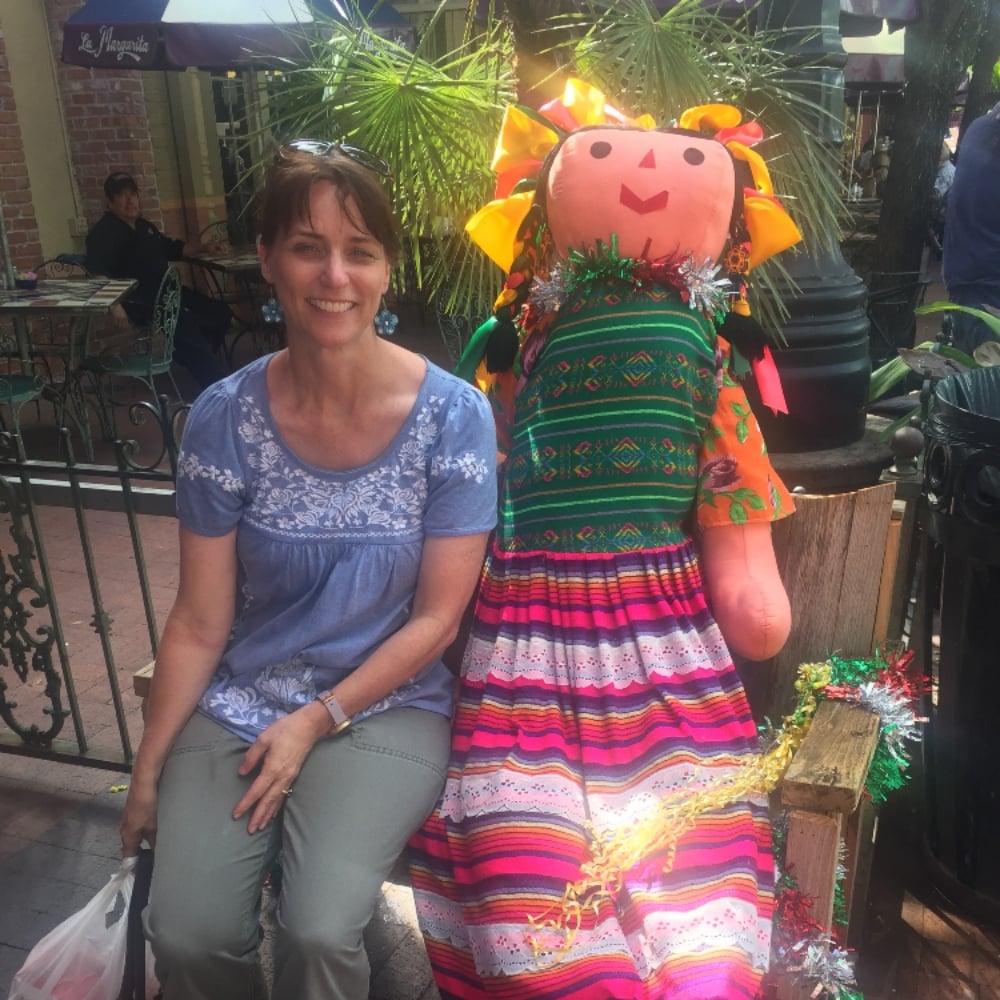
A teaching experience helps Sarah Pedrozo to realize the need to add another step to the Roses, Thorns, and Bud method of sharing.
There I was, just a couple of nights ago, looking out at a room of blank faces. I had just asked the parents in the room to turn and talk to each other, sharing their answers to a simple question, “What are some non-religious rituals you have in your home?”
I was teaching a class on Baptism to parents who are preparing to have their children go through that sacrament in the next couple of months. There were about 50 people in the room, from new parents going through Baptism prep for the first time to parents with their second or third child who were somewhat annoyed that they had to come in at all.
We had just finished watching a short film about rituals and how we, as humans, naturally create rituals in our everyday lives. This can be anything from how we leave the house in the morning to how we pack for the gym. The point of the movie was that these natural rituals of washing and eating and speaking become elevated and drawn into the divine life of the Trinity when they are taken up in the sacraments. Grace perfects nature.
The Problem
And, for the most part, all the parents understood what the film was saying. That wasn’t the problem. The real problem was uncovered, as it always is, when they had to have a conversation with the people next to them.
The difficulty we have today in having simple, natural conversations with people around us is painfully apparent. No one needs to be reminded of how this lack of ability to communicate is displayed in an extreme version in national politics and on social media.

In the last nearly two decades as a lay minister, I have seen this play out again and again. Part of my job is to host Family Faith evenings, where we might have over 200 people gathered in the hall. I can ask the families any question, and I’ll see the same response. They don’t know how to talk to each other.
Although we might hear that it’s colleges or high schools that poison our children and fill them with hate, I think the truth is that it starts much earlier. It’s common for me to see families with elementary students not be able to maintain a conversation for longer than 30 seconds. This especially matters because families have to be able to share their ordinary, everyday lives before they will be willing to share anything about their faith lives with each other.
An Answer
But if all this sounds terribly depressing, I do have some good news. We can certainly learn this skill. Just because families, neighbors, even parishes have lost the know-how to have everyday conversations doesn’t mean that it can’t be recovered.
There is an easy, inviting method of learning to share that also lends itself to learning to reflect - the Roses, Thorns and Buds system. In fact, I’ve written about this method for CatholicMom.com before.
The Roses, Thorns and Buds system has been around since the 1970s, so it's not a new idea. I did some research, but I couldn’t pinpoint exactly who is attributed with coming up with it. Some sources say it is from the Boy Scouts, but others claim individual people.
In a nutshell, it’s a method of asking 3 questions and listening for the answers:
- Roses: What is one good thing that happened to you today?
- Thorns: What is one not so good thing that happened to you today?
- Buds: What is one thing you are looking forward to or hope for?
These three questions foster communication and set the habit of sharing. Once that habit has been created, it's a small step to move into Faith Talks and tack on a prayer or a follow-up question. That might look like:
- Roses: Let’s thank God for that wonderful moment!
- Thorns: Can we pray together that God helps you with that experience? We can ask for wisdom and guidance from Him.
- Buds: What do you think God is asking of you?

One More Step
These two sets of questions are important, but after the Baptism class mentioned above, I realized that there was one step missing: the Bouquet. Not only should we think about our everyday life and how our faith illuminates and permeates it, but we can also offer it all back to God like a big bouquet. We can gather up all those roses, thorns, and buds — all those joys, sorrows, and hopes — and give them to God so that nothing is wasted, not a single smile, tear or worry is lost.
To help parents remember this method, I created a card to hand out and I’m sharing it here as well. I hope this simple approach leads to lots of sharing, good conversations, and healthy habits, as well as a daily offering up of all the parts of life.
Share your thoughts with the Catholic Mom community! You'll find the comment box below the author's bio and list of recommended articles.
Copyright 2025 Sarah Pedrozo
Images: Canva; Share and Pray card created by Sarah Pedrozo using Canva and Canva Magic Media, all rights reserved.
About the Author

Sarah Pedrozo
Sarah Pedrozo has worked in family faith formation for the past 15 years, helping families learn and live their Catholic faith. With master's degrees in theology and English, she especially likes using stories to catechize. Sarah blogs at BasketsAndBlessings.com, in between working and taking care of her family. She loves bluebonnets, her rescue dogs and the Texas Hill Country.



.png?width=1806&height=731&name=CatholicMom_hcfm_logo1_pos_871c_2728c%20(002).png)
Comments